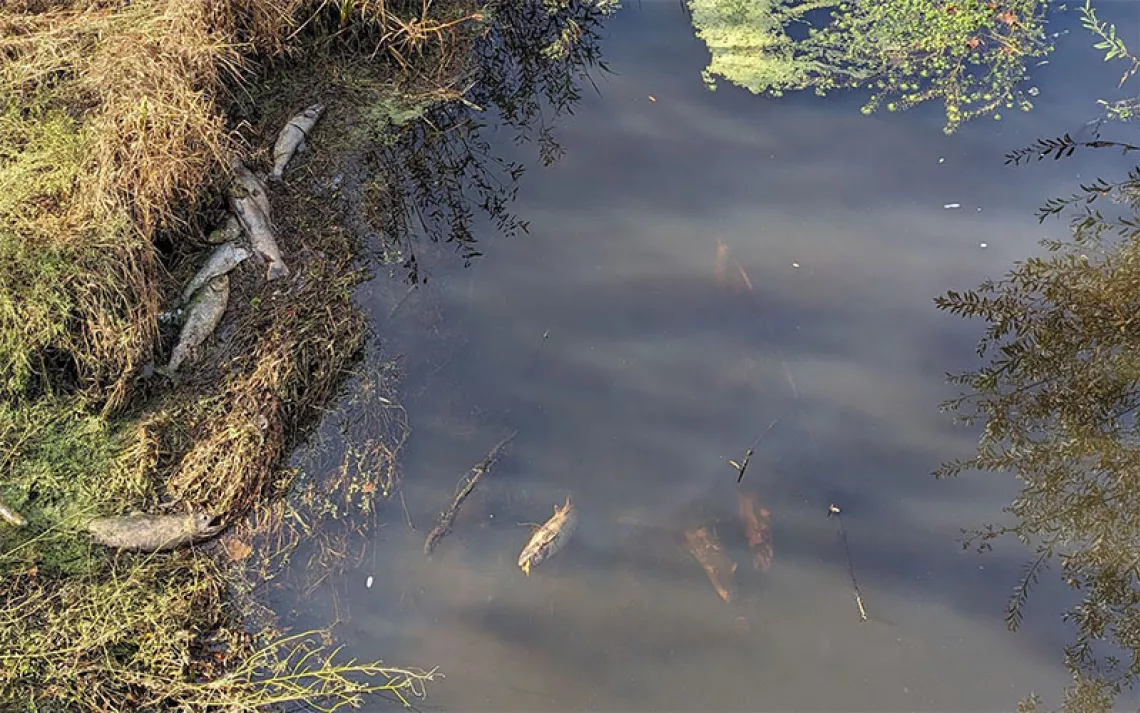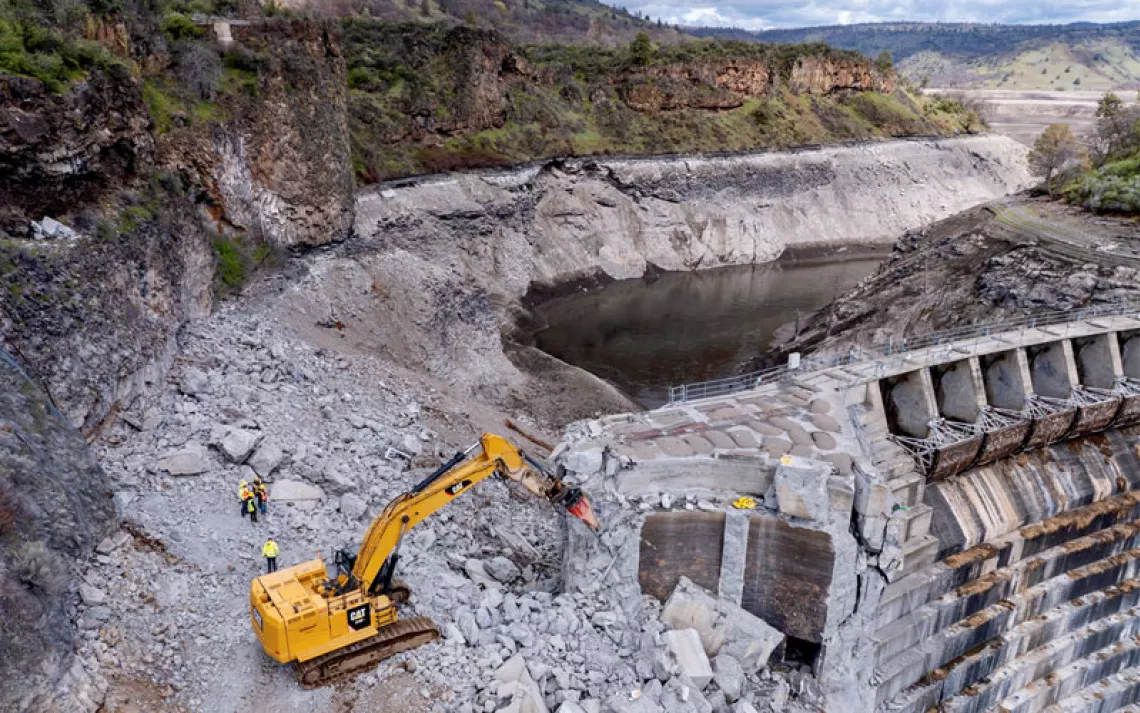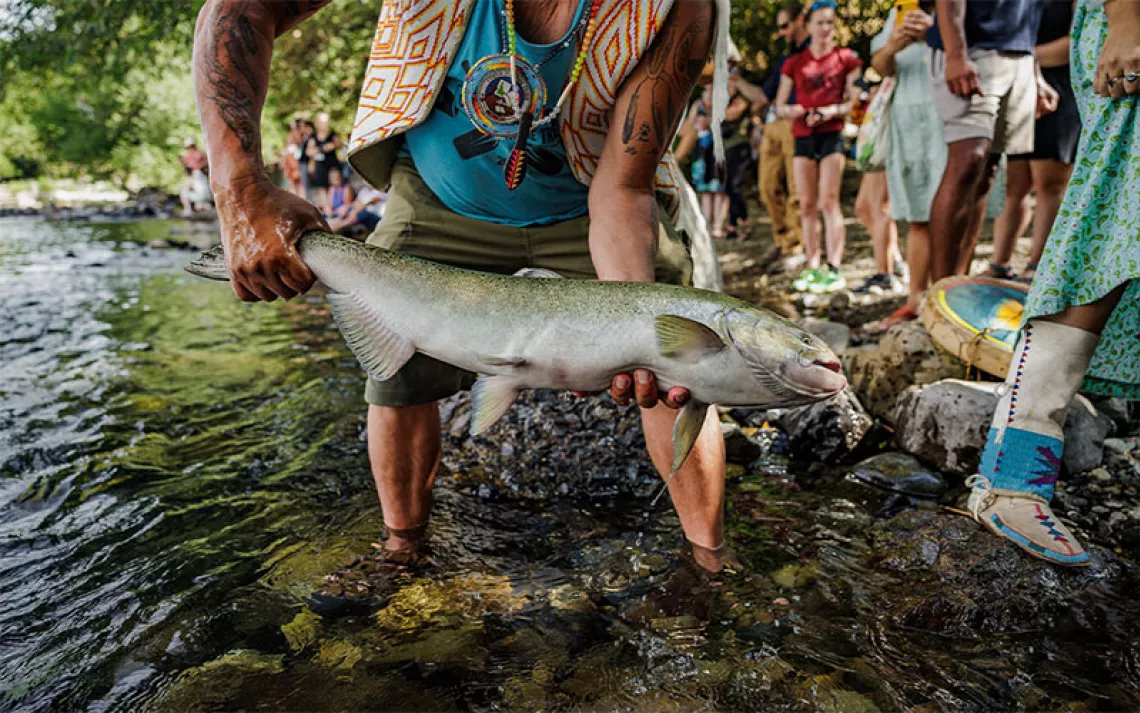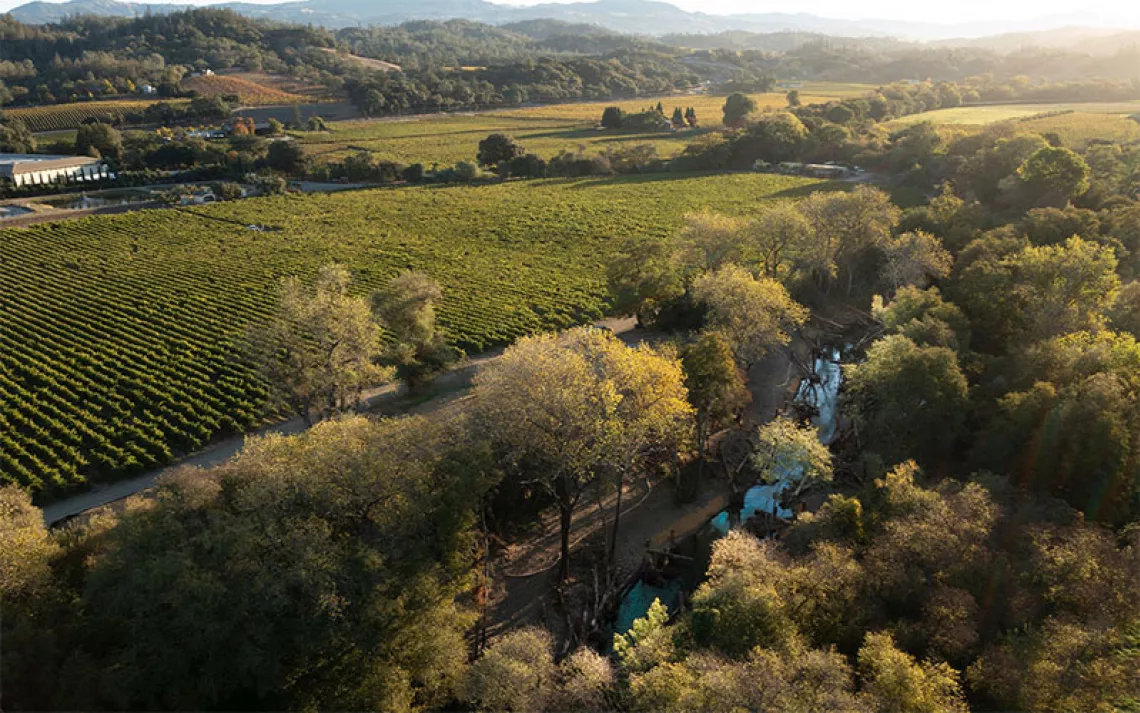These High Schoolers’ Hobbies Include Saving Endangered Species From Extinction
The United Anglers of Casa Grande is a one-of-a-kind conservation program run by high schoolers
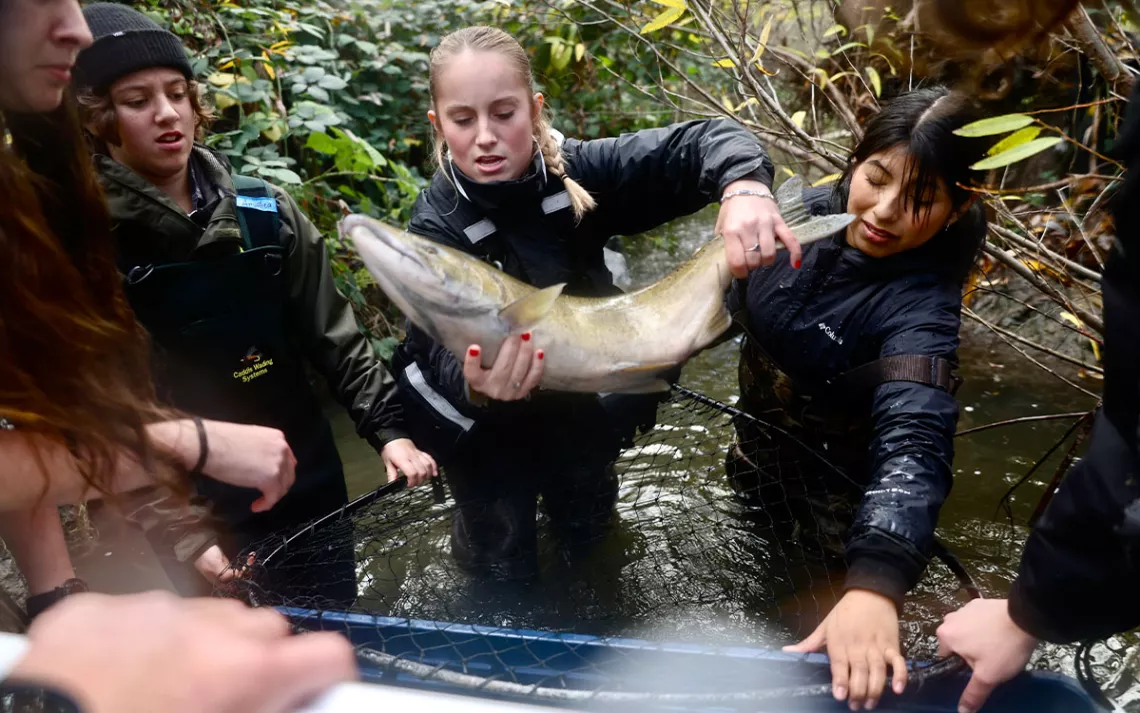
Students with United Anglers of Casa Grande collect a Chinook salmon in Washington Creek. After students measure and take a small sample, they release the fish. | Photo by Jordan Winters
Chest deep in the ice-cold water of Washington Creek in Northern California, Olivia Devin, Angelica Summary, and Camy Stinson stopped dead in their tracks. A mess of thick branches was laced tightly overhead, making the otherwise clear water appear black. The trio squinted, examining every swirl of water with hawk-like eyes, hoping to catch an elusive resident of this watershed—salmon. Then they heard a splash.
A salmon launched into the air, trying to jump a small rapid. Devin brought her wide net down into the water and missed. The fish smacked back into the water by her feet. The two others pitched into the struggle, sitting in the water, using their bodies to block any exit routes the salmon might use to sneak past. Devin swung the net around meticulously until a “got it!” punctured the brisk air.
These teens are part of a novel high school science program called the United Anglers of Casa Grande. What started as a club 42 years ago as a habitat clean-up and tree-planting project in Sonoma County now gives juniors and seniors a chance to interact with species in urgent need of help. One of these species is the Chinook salmon that Devin and her classmates spotted just 10 minutes away from their school campus.
While their classmates dream of scoring touchdowns or nailing a pirouette, finding a fish is a major accomplishment for these students. Ashley Felix, who joined the outing in Washington Creek, trapped and tagged her first salmon that day. When asked if it was an adrenaline rush, she laughed and replied, “Oh, for sure!”
United Anglers have a state permit to catch, tag, and release salmon. In 2023, the group found a total of 33 fish—each spotted by students who have cultivated a closeness to the river. They reported their findings to the National Marine Fisheries, a division of the National Oceanic and Atmospheric Administration that manages threatened and endangered species. The location, length, and general health notes of each fish help fill a large gap in what federal officials know about salmon movement and health in the Petaluma watershed.
Chinook salmon are not endangered, but scientists want to know more about the population’s habits and health in this watershed. With urbanization and climate change shifting the waterways, the fish can get lost trying to find their natal sites. Without the students’ data, it’s harder for policymakers and biologists to make conservation decisions.
“A lot of what we have is snapshots. Sometimes that's a five-year snapshot, a 10-year snapshot … but we're only talking about maybe three generations,” Darren Howe, the San Francisco Bay branch supervisor of NOAA Fisheries, said. “That's insufficient for a long-term data trend. So there's ongoing data these students are really helping to fill.”
Is the data they’re collecting painting a hopeful picture? It’s a mixed bag. Seeing three salmon on a single day, like the day Felix and Devin caught fish, is a really good sign. The United Anglers believe the creek clean-up efforts of previous generations of students opened the door for this to happen. But new threats are always one wildfire or one drought away.
In 2021, drought got so intense that over 4,000 coho salmon had to be immediately transferred to the 32,000-gallon, state-of-the-art hatchery on the school campus. The hatchery, which was once an abandoned greenhouse, transformed from a learning center to something of an animal hospital. Once the drought ended, the fish went back to Lake Sonoma and Santa Cruz. The students saw firsthand that warming river temperatures mean conservation will be a moving target for future generations. And still, in the face of a crisis, the 17- and 18-year-olds proved that they could handle the pressure of the moment.
While the work to study salmon is crucial, the project is like a trial run for a fish with a much gloomier outlook. Steelhead trout, a species listed as threatened under the Endangered Species Act, have been struggling to survive in this watershed. It’s been years since students have spotted an adult fish in the waters near their school.
“By finding out where the Chinook are, it paints a picture for where the steelhead are,” Dan Hubacker, the science teacher who oversees the student-run program, said. “It’s a dire situation for steelhead trout. It's like finding a needle in a haystack.”
The United Anglers of Casa Grande has a unique opportunity to stabilize the population. In the past, it has had artificially spawned steelhead donated from other hatcheries in other watersheds. But the students have never been able to collect the wild fish themselves. This past year, that changed when NOAA granted the students a federal permit that allows them to remove fish from areas where they might be threatened, such as a drying river. After presenting an extensive management plan and going through a rigorous years-long review process, the group can host juvenile steelhead from Petaluma on campus. And the fish can stay in the hatchery until they’re healthy enough to be released into safer parts of the watershed. Currently, the facility is home to a couple hundred steelhead juveniles, a major milestone for United Anglers.
After school, the students are responsible for feeding the fish, cleaning the gigantic tanks, measuring the water temperature, and lugging all their heavy gear into the trucks for monitoring. It’s not lost on anyone that the adolescent fish are in a similar stage of life as their caretakers, both having to navigate what home means and fighting for their place in the world side by side over the semester.
“I can confidently say that this has been something where I feel like I've kind of found my place at school and something that I'm actually passionate about and enjoy,” Devin said. “[The other student leaders and I] became friends because of this class. We talk about it all the time. There's just nothing else like it.”
Back in Washington Creek, it’s easy to understand why teens are uniquely positioned to be good stewards of their backyard habitat. The students crawl up the muddy banks of different sloughs fearlessly, shouting for each other to keep up with endless energy. These students have inherited a difficult scientific puzzle, but they are walking into their respective college careers with real-world conservation experience.
“After taking this class, you really see everything … in action,” Felix said. “You feel the importance of it.”
 The Magazine of The Sierra Club
The Magazine of The Sierra Club
